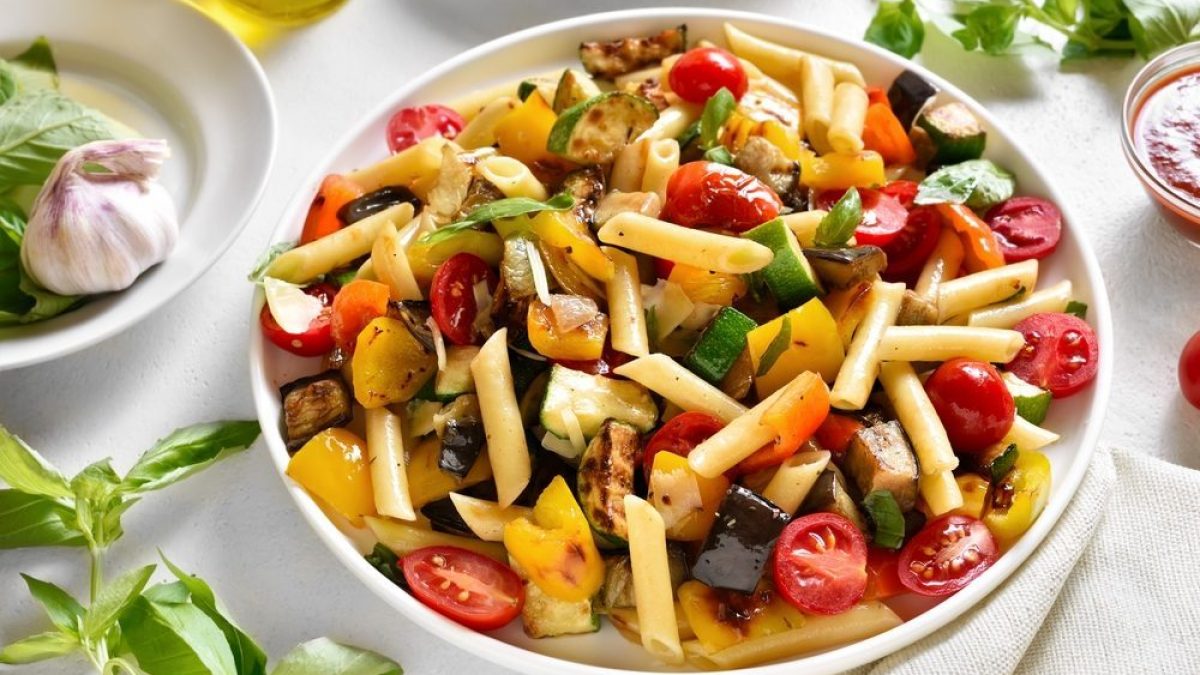
Among the iconic summer dishes, pasta salad undoubtedly occupies a privileged place. Practical, versatile, and suitable for any occasion, it is ideal for packed lunches, for day-to-day meals at home, for informal outdoor buffets, and as a lunchbox at the office. The secrets to its success are many, but above all, its ease of preparation and the possibility of customizing it to suit your tastes. No need to be alarmed—we're not telling you there's a right way to make cold pasta, the epitome of stress-free cooking —but it's helpful to know that you can make small mistakes that are actually easy to avoid, so you can create a perfect recipe and not a makeshift solution, resulting in overcooked, unseasoned pasta. Let's see what they are.
1. Choosing The Wrong Pasta Shape

The first mistake is thinking that one pasta is as good as another. In terms of shape, short pasta is better than long pasta, as it tends to stick together less once cooled, avoiding the "mushy" effect, and it holds the sauce better, especially if it's rigatoni, sedanini, mezze maniche, ditalini, or penne, which can incorporate both coarsely chopped ingredients and those reduced to a cream (as in a pesto, for example). Also, don't underestimate the final result of cooking, which must be homogeneous: for this reason, fusilli and farfalle, although spectacular, could put you at risk of having tougher parts and softer others. Finally, even cold pasta deserves quality raw materials, for example by focusing on bronze-drawing and slow processing.
2. Overcooking or Undercooking the Pasta

When is the right time to drain? In this case, calculate one minute less than indicated on the package. While cooling, the pasta continues to cook and you need to avoid it becoming mushy. At the same time, however, it should not remain too al dente, because once cold it tends to harden and, if raw on the inside, is difficult to digest.
3. Cooling it Under Cool Water

This is an automatic gesture that many do, thinking it "stops the cooking." In reality, this is a myth, because while this action speeds up the cooling process, it has a negative impact on the final result: it rinses the starch out of the pasta, which allows the sauce to bind, as well as removing flavor. Adding salt during cooking to make up for the loss under the mixer isn't a good idea; it's better to stick to the amounts you're used to. How to proceed? Transfer to a large bowl, drizzle with oil, and stir to prevent it from sticking.
4. Seasoning the Pasta While It's Still Warm

With cold pasta you don't have to rush: to combine all the ingredients you have to wait until it has reached room temperature or the heat could alter the taste and consistency of the other ingredients: just think of a mozzarella that melts or a cherry tomato that softens and is no longer crunchy.
5. Seasoning it Too Much or Too Little

There shouldn't be any rules about what to put in a cold pasta dish: there are recipes that minimize waste and empty the fridge, as well as more gourmet variations. What you need to pay attention to is the balance between the quantities and the uniformity of the ingredients in relation to the size of the pasta. Everything should be easily pierced by a fork: from this point of view, whole capers and olives are better, not chopped. When dressing cold pasta, you can also free yourself from the obsession with creaminess and a hint of crunch: so don't overdo it with creams or sauces (from various types of pesto to creamed peppers and zucchini), as they can be omitted, and there's no need to add walnuts, pistachios, or almonds.
6. Using Ready-Made Condiments

It happens much more often with rice salad: at the supermarket, ready-to-use jars of pickled vegetables tempt consumers who have little time and little enjoyment in cooking. However, the final taste also suffers from this shortcut. The suggestion is to take advantage of seasonal ingredients and build the dish according to your needs: cherry mozzarella, cherry tomatoes, and a few basil leaves are enough for a simple, yet flavorful and colorful, recipe without too much preparation. You can then explore countless other variations made with fish, meat, and vegetarian options, always keeping the freshness in mind. Canned tuna, dried tomatoes, packaged table olives, or canned corn are also welcome: they're very handy allies. The positive side of pasta salads is that they can always be different.
7. Not Letting The Salad Rest

We've already said that haste is the enemy of cold pasta: once you've combined all the ingredients, the flavors must meld together. It's no coincidence, in fact, that it's prepared in advance, given that it needs to rest for at least a couple of hours before being served. Store it in the refrigerator on the middle shelf, covered with plastic wrap or in an airtight container. Before eating, add a little extra virgin olive oil to make it fluid, as low temperatures can make it compact and dry it out slightly.
;Resize,width=767;)
